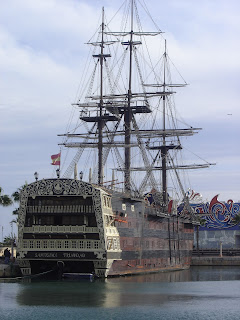St George's Day
Today is the 23rd of April - St George's Day. Do you know the history behind this date?
- In 1222 the Council of Oxford declared April 23rd to be St George’s Day
- It was not until 1348 that St George became the Patron Saint of England
- In 1415, St George’s Day was declared a national feast day and holiday in England
- However, after the union with Scotland at the end of the 18th Century, the tradition diminished and since has not been widely acknowledged and is no longer a national holiday
- Traditional customs were to fly the St George’s flag and wear a red rose in one’s lapel
- The hymn ‘Jerusalem’ was also sung on the 23rd April, or the nearest Sunday to that date, in churches across the nation
But "Who was St George?"
Facts of St George’s life have passed through the centuries growing in legend and myth. However, he must have been some character in his lifetime for his reputation to have survived for almost 1,700 years!
There are many accounts giving what are believed to be the facts outlining the life of England’s Patron Saint. Below are the widely accepted ‘facts’ of St George’s life.
- St George was born to Christian parents in A.D. 270 (3rd Century) in Cappadocia, now Eastern Turkey
- He moved to Palestine with his Mother and became a Roman soldier, rising to the high rank of Tribunus Militum
- However, he later resigned his military post and protested against his pagan leader, the Emperor Diocletian (245-313 AD), who led Rome’s persecution of Christians
- His rebellion against the Emperor resulted in his imprisonment, but even after torture he stayed true to his faith
- The enraged Diocletian had St George dragged through the streets of Nicomedia, Turkey, on the 23rd of April 303 AD and had him beheaded
- The Emperor’s wife was so inspired by St George’s bravery and loyalty to his religion, that she too became a Christian and was subsequently executed for her faith
The Legends
According to the Golden Legend, the narrative episode of Saint George and the Dragon took place in a place he called "Silene", in Libya; the Golden Legend is the first to place this legend in Libya as a sufficiently exotic locale, where a dragon might be imagined. In the tenth-century Georgian narrative, the place is the fictional city of Lasia, and it is the godless Emperor who is Selinus.
The town had a pond, as large as a lake, where a plague-bearing dragon dwelled that envenomed all the countryside. To appease the dragon, the people of Silene used to feed it two sheep every day, and when the sheep failed, they fed it their children, chosen by lottery. It happened that the lot fell on the king's daughter, who is in some versions of the story called Sabra. The king, distraught with grief, told the people they could have all his gold and silver and half of his kingdom if his daughter were spared; the people refused. The daughter was sent out to the lake, decked out as a bride, to be fed to the dragon.
Saint George by chance rode past the lake. The princess, trembling, sought to send him away, but George vowed to remain. The dragon reared out of the lake while they were conversing. Saint George fortified himself with the Sign of the Cross, charged it on horseback with his lance, and gave it a grievous wound. He then called to the princess to throw him her girdle, and he put it around the dragon's neck. When she did so, the dragon followed the girl like a meek beast on a leash.
The princess and Saint George led the dragon back to the city of Silene, where it terrified the people at its approach. But Saint George called out to them, saying that if they consented to become Christians and be baptised, he would slay the dragon before them. The king and the people of Silene converted to Christianity, George slew the dragon, and the body was carted out of the city on four ox-carts. "Fifteen thousand men baptized, without women and children." On the site where the dragon died, the king built a church to the Blessed Virgin Mary and Saint George, and from its altar a spring arose whose waters cured all disease.
Traditionally, the sword with which St. George slew the dragon was called Ascalon, a name recalling the city of Ashkelon, Israel. From this tradition, the name Ascalon was used by Winston Churchill for his personal aircraft during World War II (records at Bletchley Park), since St. George is the Patron Saint of England.




No Deposit Bonus Codes 2021 | Play No Deposit Casino Free
ReplyDeletePlay 온카지노 for free for fun no deposit bonus codes for US players. Get 100% up 인카지노 to $1600 with the no deposit bonus code "GAMBLER" when playing หารายได้เสริม online casino games.